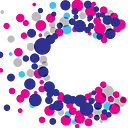Making the move to agile ways of working
Getting my head around the terminology, finding out what stand ups are and realising I don’t know my user as well as I thought
Starting at Cancer Research UK over 10 months ago, I had no idea what it meant to work in an agile environment. In all honesty, when I first heard the word agile, it conjured up images of sprightly employees making their way across the office, leaping through the air, before twisting and twirling into their designated meeting rooms.
Realising I probably wasn’t quite grasping the concept, I decided to do some reading up before my first day. Article upon article told me that agile ways of working had sprung from thinking of new ways to manage software development projects which resulted in the creation of the ‘Agile Manifesto’. Surprisingly, unless someone was going to quiz me on the origins of agile, this didn’t really help me a great deal.
There was only one thing for it, to get stuck in and learn as I went along. And that’s what I did.
You won’t have a clue what anyone is talking about
… well for a few days (or weeks) at least.
‘So you’re used to waterfall ways of working then?’
‘Quick, it’s time for stand-up.’
‘Have you added it to the Trello board?’
‘Are you working in Kanban or Scrum?’
Huh?!
As with any job you come into new, you soon realise that all the acronyms, jargon and technical terms that people throw around, are all just fancy words for something that’s not actually that complicated to get your head around.
Once you experience the tools, meeting and methods in practice, it all becomes a lot clearer and you soon get into the swing of things. And of course, when things don’t make sense, there’s always someone more than happy to explain it to you!
Your first stand-up will probably be a bit unnerving…
Stand-ups are a chance, usually once a day, for the whole team to meet for a quick status update and take place standing up (hence the name.)
My first stand-up experience, for want of a better word, was slightly unsettling. As each member of the circle declared to the group what they had worked on the day before and what they were planning to do the next, my turn crept closer and closer. As all eyes fell on me, two thoughts crossed my mind:
- Why is everyone so happy to let everyone know what they’re working on?
- I’ve not actually been here that long yet. What the hell am I going to say?!
First my defensive side came out. I was very much used to just getting on with a task and then delivering it and found the thought of sharing what I was working on very uncomfortable. Why did everyone else need to know? Why does it matter to them?
Then my self-conscious side came out. What if they thought I wasn’t doing enough? What if I worked on a different project the day before and hadn’t anything to say the team whose eyes were now fixed on me?
What I soon learnt was that stand-ups aren’t there as a forum for people to judge each other’s workload. Stand-ups are in fact a great way to keep things moving. Instead of just putting your head down and plodding away at a task until it’s finished, stand-ups give you the opportunity to air any concerns or barriers you may face, and allow you to quickly and honestly tackle them together as a team.
You don’t know your user as well as you think you do…
I’m by no means a stranger to putting the hours into researching what users wanted from their content. Pulling stats, numbers and data from various tools and reports. But one thing that I wasn’t used to, was taking the time to stop and actually listen to the users themselves.
My first experience of user testing was fascinating. Sitting in the usability lab, watching from a separate room through a live feed, I was able to watch real people interacting with pages on our site in real-time. Where some elements worked well, some aspects of the page, that as a team we’d assumed were obvious and easy to use or understand, saw the users struggling.
Agile is about responding to change. It’s too late to wait till the end of a project to ask for feedback, only to find what you’ve produced isn’t quite right. It’s about testing and listening to your users throughout the entire process.
Taking our observations from usability testing, we were able to respond and implement the changes moving forward. The end result? You’re left with something that actually makes sense and works for your users.
For me now, users are not just an abstract concept. They’re real people, with real insights. So why not make the most of that?
Moving to a completely new way of working is always daunting and is almost always going to generate some scepticism. But from my experience of working in agile, the benefits seem obvious. Put your users first, work together as a team, respond to change. Immerse yourself in these principles and you’ll be an agile advocate in no time.
Originally published at crukdigitalteam.blogspot.com on December 11, 2018.

